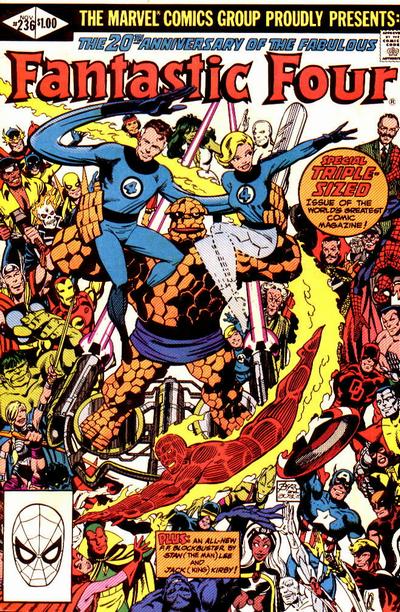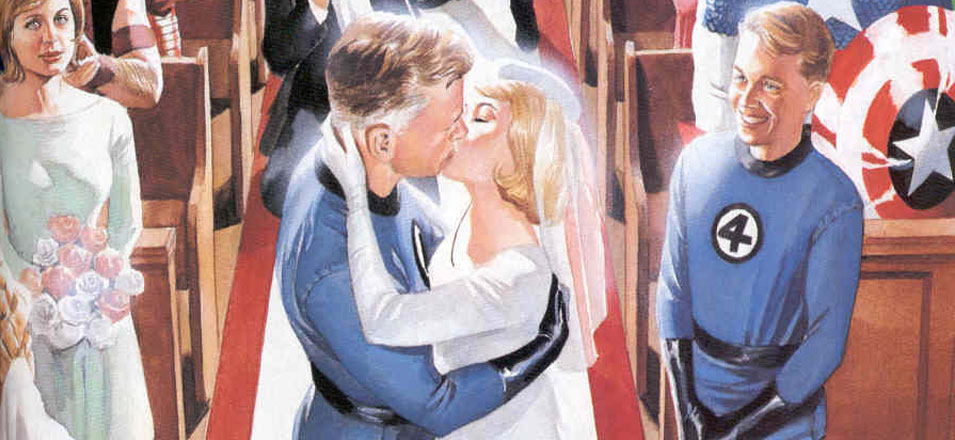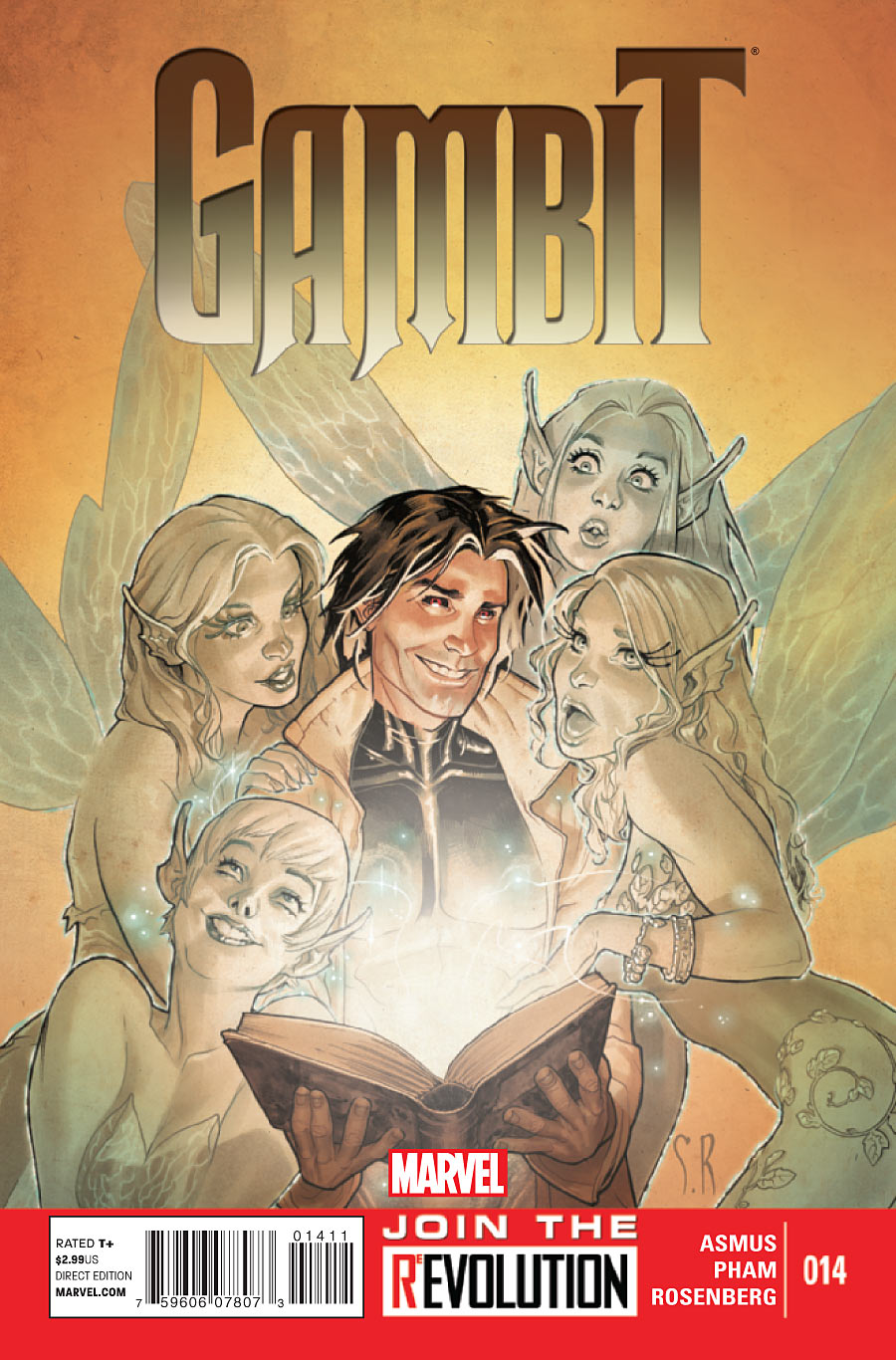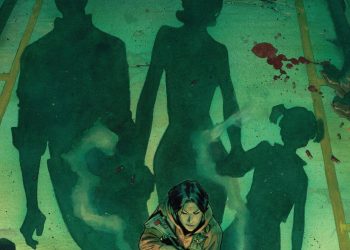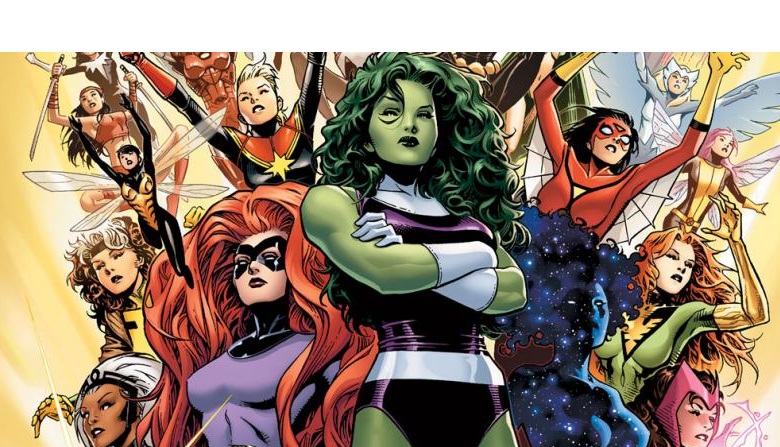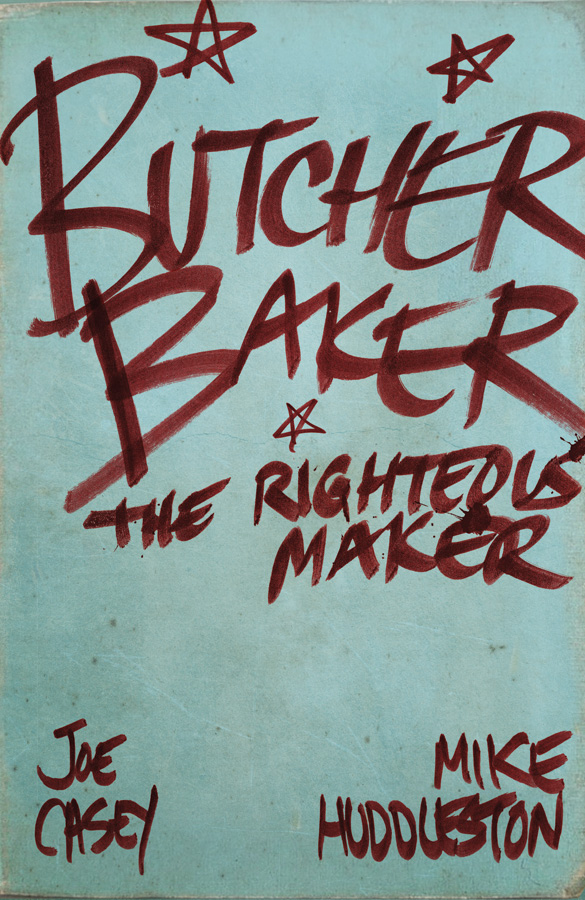
Butcher Baker the Righteous Maker
Written by Joe Casey
Art by Mike Huddleston
Lettering by Rus Wooton
Design by Sonia Harris
Review by Joey Braccino
First and foremost, this comic is definitely not for all readers. Joe Casey and Mike Huddleston’s Butcher Baker the Righteous Maker is at once a crude and rude orgy of sex, violence, and 1970s-inspired machismo as well as a brash, profound meditation on heroism and superheroic storytelling in general. When a comic opens with hyperbolically (?) sinister renditions of Jay Leno and Dick Cheney grasping a golden doorknob shaped like a male phallus, you know you’re in for a “Mature Readers” ride like no other. Leno and Cheney are visiting retired-and-in-hiding former superhero, Butcher Baker, with an offer that will bring the Righteous Maker out of retirement for one more explosion-riddled ride.
Casey and Huddleston are not, however, just interested in dropping F-bombs, blowing up everything, and painting naked gals and guys (and a lot of naked gals and guys there be, in both sensual and disturbing situations). Instead, Butcher Baker the Righteous Maker addresses larger questions intrinsic to the superhero genre that often go unasked and unanswered: “Are superheroics fulfilling?” “Why don’t they just execute the supervillains and call it a day?” “Who determines what is moral and not?” “What happens to superheroes when they ‘hang it up?’” “What’s the refractory period for a Captain-America-esque man with accelerated healing?”
[Okay, maybe not that last one. But if you were looking for that answer, then Butcher Baker has an answer for you!]
And that Captain America parallel is not unfounded; Butcher Baker, for all his machismo and misogyny, is America’s most famous superhero because of a pseudo-super-soldier serum and medical operations he had back during “the war.” Further parallels could be drawn to characters like Watchmen’s Comedian and Marvel’s Punisher. So yeah—imagine if Captain America, the Comedian, and the Punisher all had a genetically modified clone-baby. That would be Butcher Baker. Add in a little Kurt Russell as Jack Burton in Big Trouble in Little China, and you’ve got your eponymous superhero right there.
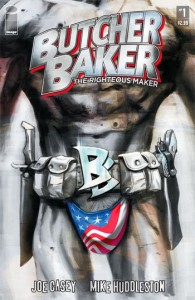
When we first meet Butcher Baker (in the aforementioned proposal scene that kicks off the whole conflict), he’s lounging out in a fetish-club with a gaggle of nude girls, smoking, snorting, and drinking, all while bathed in an oversaturated blue-pink glow. Think Fraction and Moon/Ba’s Casanova series. Leno and Cheney send Baker on a mission to blow up the Crazy Keep—the prison in which all of the captured super-villains are kept. Baker succeeds in destroying the prison, but some of the vilest villains from his rogues gallery survive and vow vengeance. And, as always, hilarity ensues.
Huddleston’s artwork is just as decadent and experimental as Casey’s script. Certain panels are illustrated in a scratchy, 1990s cartooning style and vary between black & white or sepia washes and splotches of flat colors and paints. Other panels are gorgeously inked and digitally painted. The result is a visually engaging pastiche of multiple styles and illustrative trends, all connected to certain motifs and moments in the comic book. Superheroic moments attain their luster through those rich washes; morally bankrupt scenes are scratched out and haphazardly colored. The figurework is appropriately tuned to the power fantasies and misogyny of superhero comics of yesteryear, but it’s important to recognize all of this design work as parody, satire, and genre commentary.
Verdict
Again, this book is certainly not for all readers. The content alone is an explicit hodgepodge of sin and gore, and the artwork and thematic material is some heavy metaphysical brainstuffs. All that aside, as a collection, Butcher Baker the Righteous Maker tells one heck of a story and features some damn good artwork. When the series was running in 2010-2011, extensive delays and a public creator-conflict between Casey and Huddleston pushed this critically acclaimed series into the back of many readers’ minds. Now, Image has made the wise choice of collecting all 8 issues into one book and loading up the back end with over 50 pages of supplementary material, including covers, scripts, essays, and preliminary designs. If you’ve got the stomach for it, check this book out!

